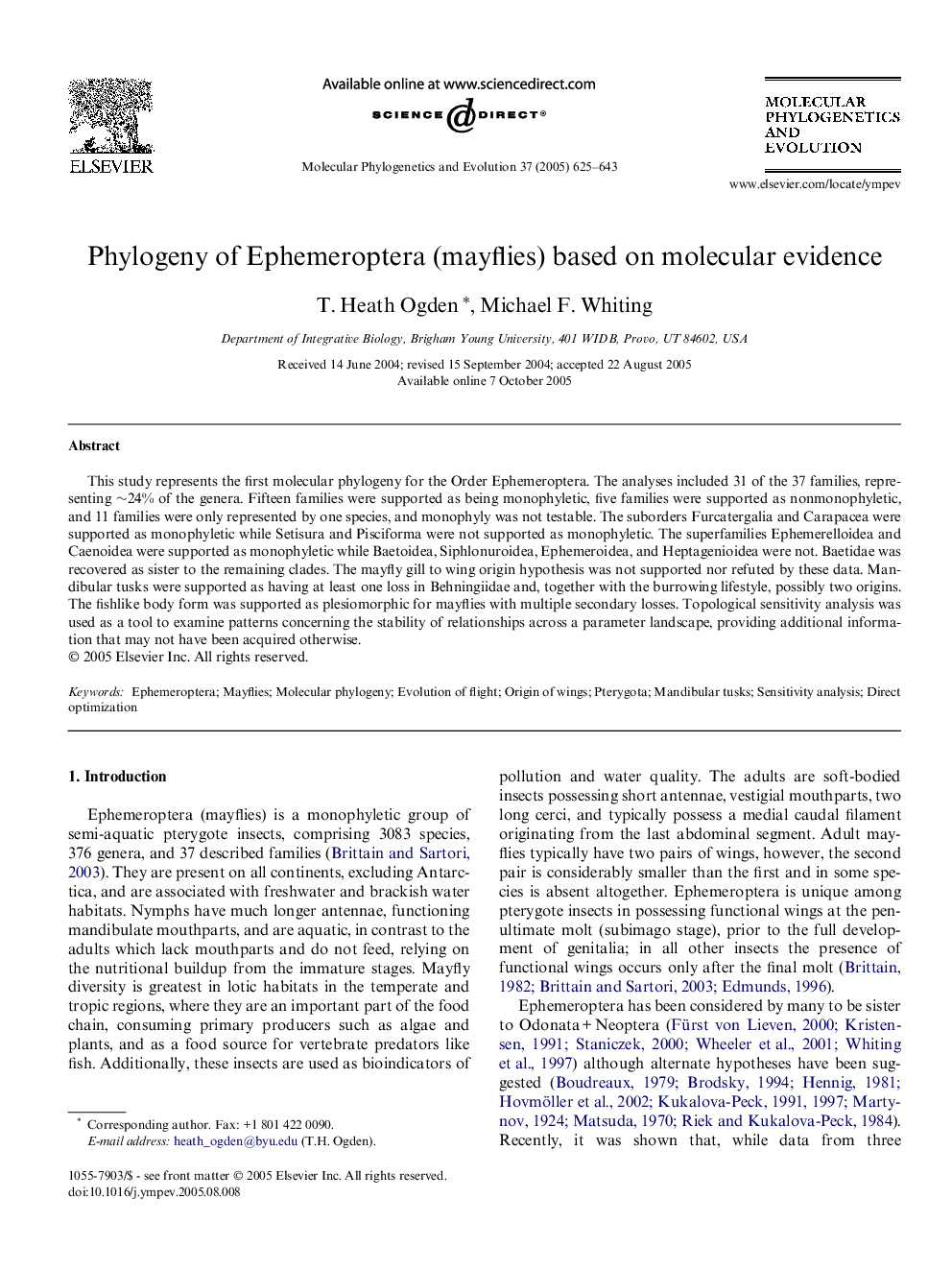| Article ID | Journal | Published Year | Pages | File Type |
|---|---|---|---|---|
| 9142936 | Molecular Phylogenetics and Evolution | 2005 | 19 Pages |
Abstract
This study represents the first molecular phylogeny for the Order Ephemeroptera. The analyses included 31 of the 37 families, representing â¼24% of the genera. Fifteen families were supported as being monophyletic, five families were supported as nonmonophyletic, and 11 families were only represented by one species, and monophyly was not testable. The suborders Furcatergalia and Carapacea were supported as monophyletic while Setisura and Pisciforma were not supported as monophyletic. The superfamilies Ephemerelloidea and Caenoidea were supported as monophyletic while Baetoidea, Siphlonuroidea, Ephemeroidea, and Heptagenioidea were not. Baetidae was recovered as sister to the remaining clades. The mayfly gill to wing origin hypothesis was not supported nor refuted by these data. Mandibular tusks were supported as having at least one loss in Behningiidae and, together with the burrowing lifestyle, possibly two origins. The fishlike body form was supported as plesiomorphic for mayflies with multiple secondary losses. Topological sensitivity analysis was used as a tool to examine patterns concerning the stability of relationships across a parameter landscape, providing additional information that may not have been acquired otherwise.
Related Topics
Life Sciences
Agricultural and Biological Sciences
Ecology, Evolution, Behavior and Systematics
Authors
T. Heath Ogden, Michael F. Whiting,
